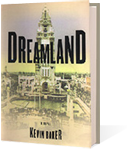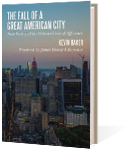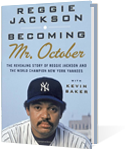Race, immigration, and sexuality have divided
the electorate before.
Here’s why 2016 might be different.
Something must be done. A violent, radical movement, perpetrated by ruthless fanatics who are shutting down churches, torturing Christians, and beheading opponents, is convulsing a continent. The bloodthirsty, outlaw regime has launched an undeclared war on the U.S. Meanwhile, thousands of “the most vile and worthless” people are fleeing the chaos, pouring into the United States. Among them are spies and revolutionaries, hoping to overthrow our entire way of life.
“All our present difficulties” are a result of the “hordes of foreigners in the land”; a population of “dangerous” aliens is in our midst. The media is full of “abuse, deception, and falsehood.”
The year is 1798. The quotations come from a Pennsylvania newspaper; President John Adams’ nephew, William Shaw; and Adams’s wife, Abigail, respectively. The violent, disruptive foreign regime was that of the French Revolution, supported expressly by Vice President Thomas Jefferson and his Democratic-Republican Party and frequently by the foreign-born pamphleteers and newspaper scribblers they surreptitiously paid to champion it—and to dump opprobrium on the president of the United States and his government.
The anti-immigrant rhetoric now spewing from the mouth of the man whom the Republican Party is expected to nominate next week to vie for the presidency is almost as old as America itself. The Alien and Sedition Acts were passed by a Federalist Congress and signed into law by Adams as a way to silence dissent and keep those Democratic-Republicans from building a majority with the immigrants then flocking to their party. It is the original political wedge: a secondary issue used to divide the other side and bring some of its members into your camp. Wedge issues are usually aimed at the voter’s basic identity; they’re designed to break down reasoned party affiliations by appealing to primal emotions.
Immigration isn’t the only wedge issue we are likely to see this election season. Our national campaigns seem to be existential battles these days, revolving around life-and-death issues: Terrorism. Jobs. Health care. Republican fund-raisers warn that a President Hillary Clinton could leave us open to a nuclear attack from Iran. Democrats point to Donald Trump as unfit to hold our nuclear launch codes.
The brutality of Trump’s honesty does the same thing that wedge issues do. It addresses the emotional needs of constituencies in very direct ways, and it allows them to subordinate the things that differentiate them.
CRAIG STEVEN WILDER, PROFESSOR OF HISTORY, MIT
It’s just as likely, though, that this year’s elections will be decided as they so often are: by issues that no one anticipated would loom so large. We think of wedge issues as ancillary and inessential, subjects that many would like to think should not be issues at all, born as they are of prejudice, ignorance, even superstition. (There is nothing like a wedge issue to diminish our faith in democracy.) And yet, they are usually more relevant to voters than the so-called big issues.
“The modern party system was created in the Civil War, and the only way to break [voters] out is to wedge them out,” says University of Oklahoma history professor Steven M. Gillon.
Tricky to handle, carefully implemented, the wedge issue doesn’t always make obvious its real target. This year, a host of potent ones wait in the weeds for cynical political operatives and campaigns to exploit: our perennial preoccupations with race and immigration, bathrooms for the transgender population, and gun rights, for starters—though we may see some surprising reversals on these. Are these distractions so much as the issues that get to the heart of the American electorate and what really divides it?
The most effective and most instructive wedge issue in modern politics burst on the scene with a glaring mug shot of the felon Willie Horton. In 1988 GOP operative Lee Atwater used the image to turn around Vice President George H.W. Bush’s anemic campaign against Democrat Michael Dukakis, governor of Massachusetts. Horton was serving a sentence of life without parole for a brutal murder when he was allowed to participate in a weekend furlough program for Massachusetts inmates. He used the freedom to repeatedly rape a young woman, pistol-whip her fiancé, and steal his car. Horton was apprehended only after being shot by police.
This was a single failure in a furlough program devised under Dukakis’ predecessor. Most states and the federal government operated furlough programs from which other felons sometimes escaped and did terrible things. But the real aim of Bush and Atwater was not criminal justice reform but to sound another dog whistle on white fears about liberals coddling violent black criminals.
Dukakis’ failure to find sufficient outrage to condemn Horton cast him as a type, a particular straw man that Republicans had spent decades carefully piecing together. The Duke was depicted as one more weak-kneed liberal, incapable of anger over even vicious attacks. The wedge issue of white fears about black violence—dating to slavery days and persistent still, judging by the disproportionate arrest rates and police use of force against African Americans—is a template for all the rest.
“Wedge issues,” Gillon says, “create the other.” They don’t just exploit it. They tend to be a lot of noise over an expansion of rights (sometimes perceived, sometimes real) to a marginalized group. The group may barely intersect with the people the wedge is designed to appeal to—how many straight Southerners are likely to encounter a trans person, let alone in a public bathroom? Or will realize it if they do? But the successful wedge issue convinces them that any right someone else gains will diminish their own.
Yet, as the next major such effort by Republicans showed, turning a group into a threat may win you an election but cost you a generation of voters. In 2004, Atwater’s tactics were used by his more sophisticated protégé, Karl Rove, while trying to thread a second, faltering President Bush through the eye of an election needle. As Gillon says, “wedge issues are used to reinforce party loyalty,” not just weaken the other side’s. Before the general election campaign was under way, Rove worked with homophobic groups and legislators to place state initiatives banning same-sex marriage on the ballots before 20 million voters in 11 states: Arkansas, Georgia, Kentucky, Michigan, Mississippi, Montana, North Dakota, Ohio, Oklahoma, Oregon, and Utah.
Rove’s reported ambition was to turn out the estimated 4 million white Christian evangelicals he was convinced had stayed home for George W. Bush’s 2000 run, which would have cost him the presidency if not for the Supreme Court. He hoped at the same time to pry black Protestants and Catholics of every ethnicity away from the Democrats. In each of the 11 states, turnout increased over that of 2000—especially for Republicans—and the anti-same-sex-marriage initiatives won an average of 70 percent of the vote. In Ohio, the decisive swing state of 2004, turnout jumped by more than 1 million votes. Bush won by two points.
Wedge issues, though, can be double-edged swords—or unexploded bombs, wreaking havoc in unexpected ways long after the election they were designed for is over. Rove’s 2004 success with same-sex marriage was blunted by setbacks for conservatives on gay rights and same-sex marriage in the courts and then a stunning reversal in public opinion—“the realization,” says historian Geoffrey Ward, “that everyone has a gay uncle.” Democrats became the party of gay rights.
The most recent attempt, pre-Trump, to leverage immigration sparked a similar change. In 1994, California Gov. Pete Wilson, beset by a poor economy and anticipating a tough reelection race, turned to Proposition 187, also known as the “Save Our State” initiative. Prop. 187 makes Donald Trump sound like Emma Lazarus. The Orwellian initiative barred undocumented immigrants from receiving any public benefits. The undocumented sick and injured were to be turned away from hospitals, their children booted out of schools. All “government agents”—cops, schoolteachers, social workers, doctors—would be required by law to report anyone suspected of being an illegal alien. Prop. 187 even added deliberate insult to injury, claiming that “the People of California” were “suffering economic hardship caused by the presence of illegal immigrants in this state…and are suffering personal injury and damage caused by the criminal conduct of illegal immigrants in this state.”
Wilson, fighting record low approval ratings and trailing by 20 points early in the campaign, threw his full weight behind SOS. Come Election Day, he romped to victory by nearly 15 percentage points. Prop. 187 passed by almost 18 points. Nearly 1.2 million more Californians showed up at the polls than had in 1990, and Wilson garnered nearly a million more votes than he had in his narrow victory that year. Immigration had paid off big as a wedge issue.
Or had it?
It soon became abundantly clear that Prop. 187 cost Republicans the most populous state in the Union for a generation. It was struck down by the courts, but Hispanics—the nation’s and the state’s fastest-growing ethnic group—remained enraged and took out their anger on Pete Wilson’s party. California, which had often been tinted red since the end of World War II, now went true blue, with Democrats coming to dominate its legislature and statewide offices and winning every U.S. Senate election there since 1990. The state has not voted for a Republican president since 1988, leaving the party with the staggering disadvantage of having to concede more than 10 percent of all electoral votes before the contest begins.
Prop. 187 and the immigration issue Trump is leveraging today are, behind all screens, about race. (It isn’t immigrants from Ireland that Trump is calling “rapists” and “drug dealers.”) The Willie Horton attack ad was a continuation of Republicans’ use of race as a wedge issue since the 1950s (though it wasn’t called that then). As Jim Crow crumbled, in Gillon’s words, “Republicans used issues based on cultural resentments to break up [the] Democratic coalition.” Former Strom Thurmond staffer Harry S. Dent honed a race wedge into Richard Nixon’s Southern strategy, stressing “law and order” and other now familiar wedges, as Lee Atwater would acknowledge in an infamous conversation recorded without his knowledge—one that showed just what they could do:
“You start out in 1954 by saying, ‘N—er, n—er, n—er.’ By 1968, you can’t say ‘n—er’—that hurts you, backfires. So you say stuff like ‘forced busing,’ ‘states’ rights,’ and all that stuff.”
Ronald Reagan took it one step further, coming up with the quintessential version of the Southern strategy, one denouncing “young bucks” and the apocryphal Chicago “welfare queen” riding around in her Cadillac. The poorest, least powerful people in the country were turned into the victimizers, a neat electoral trick so audacious that Bill Clinton and the conservative Democrats who grabbed control of the party in the 1990s could not resist imitating it.
“The welfare reform movement was one that the Democratic Party co-opted and marketed to Democratic voters very successfully,” says Craig Steven Wilder, Barton L. Weller professor of history at MIT. “They were…co-opting what are really right-wing policies and rebranding and repackaging them.” With African Americans safely in the Democratic tent and voting at lower rates than whites were, Clinton could afford to sacrifice their dignity to win back a few Reagan Democrats by using welfare reform as a wedge. It was a cynical calculation many found repugnant.
Yet the dog-whistle economic policies that hurt African Americans most also hurt working- and middle-class whites plenty. Their economic status diminishing, deprived of the benefits that both parties had promised their free-market, racialist, antiwelfare policies would bring, whites rebelled—and thrilled to Trump’s other wedge issue, rhetoric itself, denouncing “political correctness” and disinterring the blunt, even savage verbiage of segregationist George Wallace from 1968.
“It’s the brutality of Trump’s honesty that appeals—that does the same thing that wedge issues do,” asserts Wilder. “It addresses the emotional needs of constituencies in very direct ways and gives them issues, ideas, words, that capture their place in the overall political culture. And it allows them to subordinate the things that differentiate them, and that they’re conflicted over.”
As Bruce Springsteen sings, maybe everything that’s old someday comes back—and not always in a good way. Immigration is a zombie wedge issue, eternally revivified in times of national unease, and Trump’s handling of it makes it clear why. He has, classically, used it to hit the two most traditionally successful wedge issues at once. As Wilder explains it, the Donald’s “campaigns against undocumented immigrants have been extraordinarily effective at race-baiting without [overtly] evoking the traditional symbol of American racial strife, which is black people…. But people of color are broadly implicated in all of those campaigns anyway. One of the reasons why that’s so effective is that it doesn’t matter what racial target you shoot at. It’s to remind you that race is still central.”
The controversy over which public bathroom transgender people are supposed to use seemed to have everything going for it: Unlike Hispanics, transgender people are not, by themselves, a large or fast-growing demographic group. (The highest estimate of the transgender population, released in a 2011 study by the Williams Institute, places it at 0.3 percent of the country—making one far less likely to have a trans uncle.) Many people don’t understand what’s at stake for trans people being forced to use bathrooms that don’t align with their stated gender, and for many, the issue creates immediate discomfort, as so much associated with a bathroom tends to. The subject can easily be distorted, as failed Republican presidential candidate Mike Huckabee tried to do, into an attempt by male child molesters or horny teenagers to get into women’s restrooms and locker rooms and rape or ogle your daughter.
Gillon sees the trans bathroom issue as an extension of antifeminist rhetoric during the fight over the Equal Rights Amendment that extended from 1972 to ’82. “I would put the ERA, equal pay, gay marriage, gay rights, all in the same constellation of issues,” he says, pointing out that right-wing activist Phyllis Schlafly used the threat of unisex bathrooms to help defeat the ERA. “Bathrooms are getting at Americans’ discomfort with the whole issue of gender,” he says.
The issue has so far failed to gel—in good part because Trump has refused to take it up. Hailing from cosmopolitan New York and having any number of gay friends, acquaintances, and colleagues, he has shied from renewing the culture wars of the GOP (though he still, coyly, promises he will appoint only Supreme Court judges who will overturn the right to same-sex marriage). Attacks on transgender people have come to be seen as attacks on the entire LGBT community and those who support it—which, almost overnight, seems to have become the vast majority of Americans. It remains to be seen how Trump will deal with the radical antigay agenda that the Family Research Council’s Tony Perkins was able to write into the draft Republican platform—the most virulent, openly homophobic position ever taken by a major party platform.
Perkins and the psycho right notwithstanding, could it be that solidarity—at least to a point—has finally muted a wedge issue in America? That belief in our common humanity has left us refusing to be divided?
Maybe. At the outset of the campaign, it seemed like this fall would present the perfect opportunity to make a wedge issue out of another staple: gun control. Working-class whites Reagan peeled away from the Democratic Party have stayed in the Republican fold, to some extent, because they were told Democrats wanted to take away their guns. But many think Orlando and Dallas may now have upended that wedge.
Gillon predicts that “guns will work for Democrats as a wedge issue…. Ninety percent of Americans support some kind of gun control.” White women who voted for Romney, according to this theory, could be brought over to Clinton if she campaigns (as Al Gore refused to do in 2000) for stricter gun laws. Michael Dukakis points out, “When the mayor of Dallas says, ‘This is really crazy—we gotta do something about this right to walk around with a rifle,’ [because] the police could not distinguish between the real shooter and a lot of other people they were stopping and detaining because they were walking around with rifles—you know something’s happening.”









